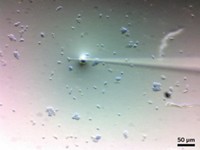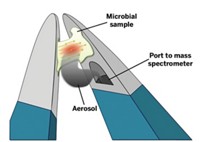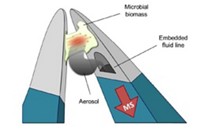Advertisement
Grab your lab coat. Let's get started
Welcome!
Welcome!
Create an account below to get 6 C&EN articles per month, receive newsletters and more - all free.
It seems this is your first time logging in online. Please enter the following information to continue.
As an ACS member you automatically get access to this site. All we need is few more details to create your reading experience.
Not you? Sign in with a different account.
Not you? Sign in with a different account.
ERROR 1
ERROR 1
ERROR 2
ERROR 2
ERROR 2
ERROR 2
ERROR 2
Password and Confirm password must match.
If you have an ACS member number, please enter it here so we can link this account to your membership. (optional)
ERROR 2
ACS values your privacy. By submitting your information, you are gaining access to C&EN and subscribing to our weekly newsletter. We use the information you provide to make your reading experience better, and we will never sell your data to third party members.
Analytical Chemistry
Real-Time Mass Spectrometry On Living Microbes
Analytical Chemistry: A new application of electrospray ionization lets chemists analyze metabolites from microorganisms without killing the colony
by Leigh Krietsch Boerner
July 24, 2013
Microbes are tiny synthetic masters, producing molecules that have led to many important drugs. Chemists want new ways to sift through the compounds produced by microbes to find the next big drug lead. Now, scientists report a mass spectrometry technique that allows them to monitor molecules produced by living microorganisms in real time (Anal. Chem. 2013, DOI: 10.1021/ac401613x).
As chemists screen through large numbers of microbial colonies to find novel compounds, they need to be able to take quick snapshots of a colony’s molecular profile, says Pieter C. Dorrestein, a bioanalytical mass spectrometrist at the University of California, San Diego. Current analytical methods either require putting microbes in a vacuum chamber, which kills them, or collecting compounds and separating them before identification, which is time consuming.
Dorrestein and his coworkers adapted an ambient electrospray ionization (ESI) technique to analyze metabolites from 34 different types of living microbes. The method was originally developed by Gary J. Van Berkel at Oak Ridge National Laboratory to analyze interactions between antibodies and proteins. This is the first time anyone has used it to look at microbial colonies, Dorrestein says.

To sample the molecules secreted by a colony, the team uses a flow probe consisting of a 245-μm-diameter capillary nested within a 330-μm-diameter capillary. Solvent continuously flows out from the gap between the capillaries onto the colony and is immediately vacuumed up via the inner capillary, carrying any dissolved metabolites. The probe then sends the sample into a conventional electrospray ionization mass spectrometer. The solvent flow is gentle enough that the sampled colonies stay intact, Dorrestein says.
To test the method, Dorrestein’s team verified the presence of molecules known to be secreted by some familiar microorganisms. For example, they examined two strains of Bacillus subtilis, a bacterium that produces a lipopeptide antibiotic. “We were able to show that we can see natural products and virulent factors from these different microbes,” Dorrestein says.
Previously, the group had used a similar technique called nanospray desorption electrospray ionization (nanoDESI) to sample living colonies (Proc. Natl. Acad. Sci. USA 2012, DOI: 10.1073/pnas.1203689109). However, its probe has a low flow rate, which leads to clogging problems in the capillary, Dorrestein says.
Using the continuous-flow probe allows chemists to look at microbes in a way that other mass spectrometry methods don’t allow, such as analyzing the colonies while they’re alive, says Van Berkel, who was not involved in the study. “The technique is well suited for this type of analysis.”
Jonathan C. Trinidad, a biological mass spectrometrist at Indiana University, Bloomington, says that the work is a good demonstration that this probe can capture data from a broad range of organisms. However, as with other approaches, such as nanoDESI, there is still room to improve the method’s sensitivity, robustness, and ease of use. So the study is “one of many required steps in the right direction rather than a complete story,” he says.





Join the conversation
Contact the reporter
Submit a Letter to the Editor for publication
Engage with us on Twitter